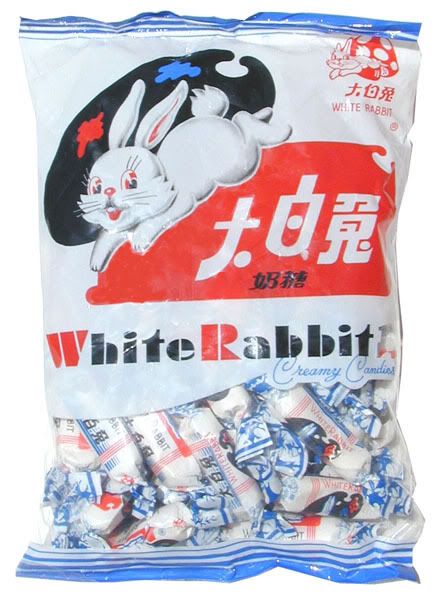I was saddened and awfully frightened by the fact that our favorite White Rabbit Creamy Candy has a formaldehyde component, a famous chemical to restore cadavers. I just bought the candies last month to replenish the candy supply in our jar... Whew. Good thing I did not buy it again.
I remember White Rabbit Creamy Candy since time immemorial. When I was a child, my friends always get amazed by the candy's edible wrapper. A wrapper that is oftenly described as "having the ingredients of the host bread for masses." Well, looks like the manufacturers really needed to make wonders so that they could create a brilliant idea like an edible wrapper. Too bad the formaldehyde ingredient is a part of that wonder.
Some facts about formaldehyde:
What Is It?
Formaldehyde is a colorless, strong-smelling gas. It is widely used to manufacture building materials and numerous household products. Its most significant use in homes is as an adhesive resin in pressed wood products. There are two types of formaldehyde resins: urea formaldehyde (UF) and phenol formaldehyde (PF). Products made of urea formaldehyde can release formaldehyde gas; products made of phenol formaldehyde generally emit lower levels of the gas.
Where Is It Found?
Formaldehyde is an important industrial chemical used to make other chemicals, building materials, and household products. It is used in glues, wood products, preservatives, permanent press fabrics, paper product coatings, and certain insulation materials. Building products made with formaldehyde resins can “off-gas” (emit) formaldehyde gas. These products include particle board used as sub-flooring or shelving, fiberboard in cabinets and furniture, plywood wall panels, and foamed-in-place urea-formaldehyde insulation. Some sources that previously contained formaldehyde are either no longer used or have been reformulated to contain less formaldehyde. Incomplete combustion, cigarette smoking, and burning wood, kerosene, and natural gas also release formaldehyde.
What Are the Health Effects?
Formaldehyde is normally present at low levels, usually less than 0.06 ppm (parts per million), in both outdoor and indoor air. When present in the air at levels at or above 0.1 ppm, acute health effects can occur including watery eyes; burning sensations in the eyes, nose and throat; nausea; coughing; chest tightness; wheezing; skin rashes; and other irritating effects. Formaldehyde affects people in various ways. Some people are very sensitive to formaldehyde while others may have no noticeable reaction at the same level of exposure. Sensitive people can experience symptoms at levels below 0.1 ppm. The World Health Organization recommends that exposure should not exceed 0.05 ppm. Colds, flu, and allergies can cause symptoms similar to some of those produced by exposure to formaldehyde. Formaldehyde has caused cancer in laboratory animals and may cause cancer in humans; there is no known threshold level below which there is no threat of cancer. The risk depends upon amount and duration of exposure.
Taken from US National Safety Council (www.nsc.org).
I don't understand how imported food like this infiltrate the market without approval from the Bureau of Food and Drugs. From what I knew, in order to obtain license to distribute and sell food products, the Bureau should do a routine check on the food's "eatability" and quality. So does this mean that there are more foods like these selling in the market?

No comments :
Post a Comment